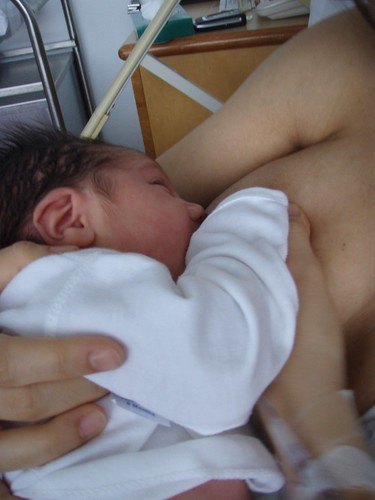
Breastfeeding creates both a special bond between you and your baby and also provides the vital nurtients your baby needs to thrive. If you are going back to work after a maternity leave or planning to have someone else care for your baby at times, you need to figure out how to switch back and forth between bottle and breastfeeding. It is best to use expressed breast milk while bottle-feeding, but you can also supplement with formula.
Instructions
- 1
Establish a firm breastfeeding relationship with your newborn by exclusively breastfeeding for at least the first three weeks of his life. During this time, you will be establishing an adequate milk supply and should consider pumping after your baby finishes feeding to begin to build up your stock of breast milk.
2Store pumped breast milk in the refrigerator for up to five days or up to three months in the freezer. You should store the pumped milk in a breast milk storage bag near the back of the refrigerator or freezer, not on the door.
3Choose a bottle with a nipple that has a wide base and round nipple to closely mimic the appearance and feel of your nipple. Purchase several different types of bottles to experiment with which bottle and nipple your baby prefers to feed.
4Begin by introducing one bottle a day to your baby. Consider having a family member or friend offer the bottle to your baby -- often a baby will refuse a bottle from her mother as she associates you with breastfeeding -- and choose a time when you know your baby will be hungry.
5Continue to breastfeed -- especially at night, when babies often nurse for comfort -- whenever possible. Ideally, you will continue to breastfeed until your child reaches the age of 1 or older.
6Continue to attempt to feed your baby with a bottle even if your baby is showing resistance. Dont force-feed your baby, but offer the bottle at least once a day and do not get discouraged.
7Pump your milk during the feedings you are offering by bottle to maintain your milk supply. Talk to your employer -- if returning to work -- about pumping while at work. Most states have laws protecting a breastfeeding mother and allowing her to pump while at work.
8Consult a lactation consultant if you have any concerns about your baby not accepting a bottle or if your baby is not wanting to breastfeed after using a bottle.



















